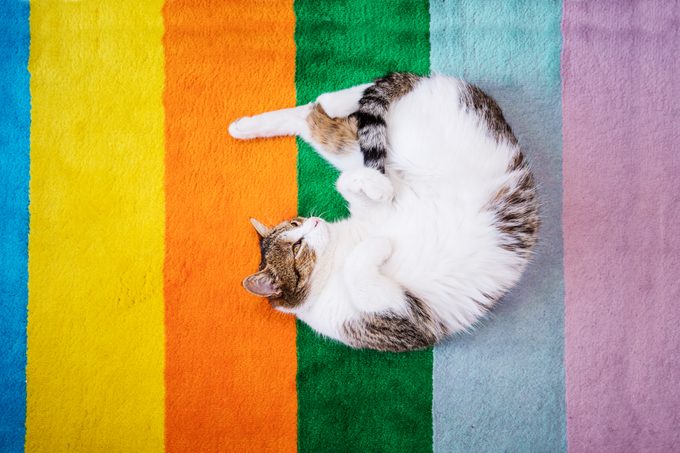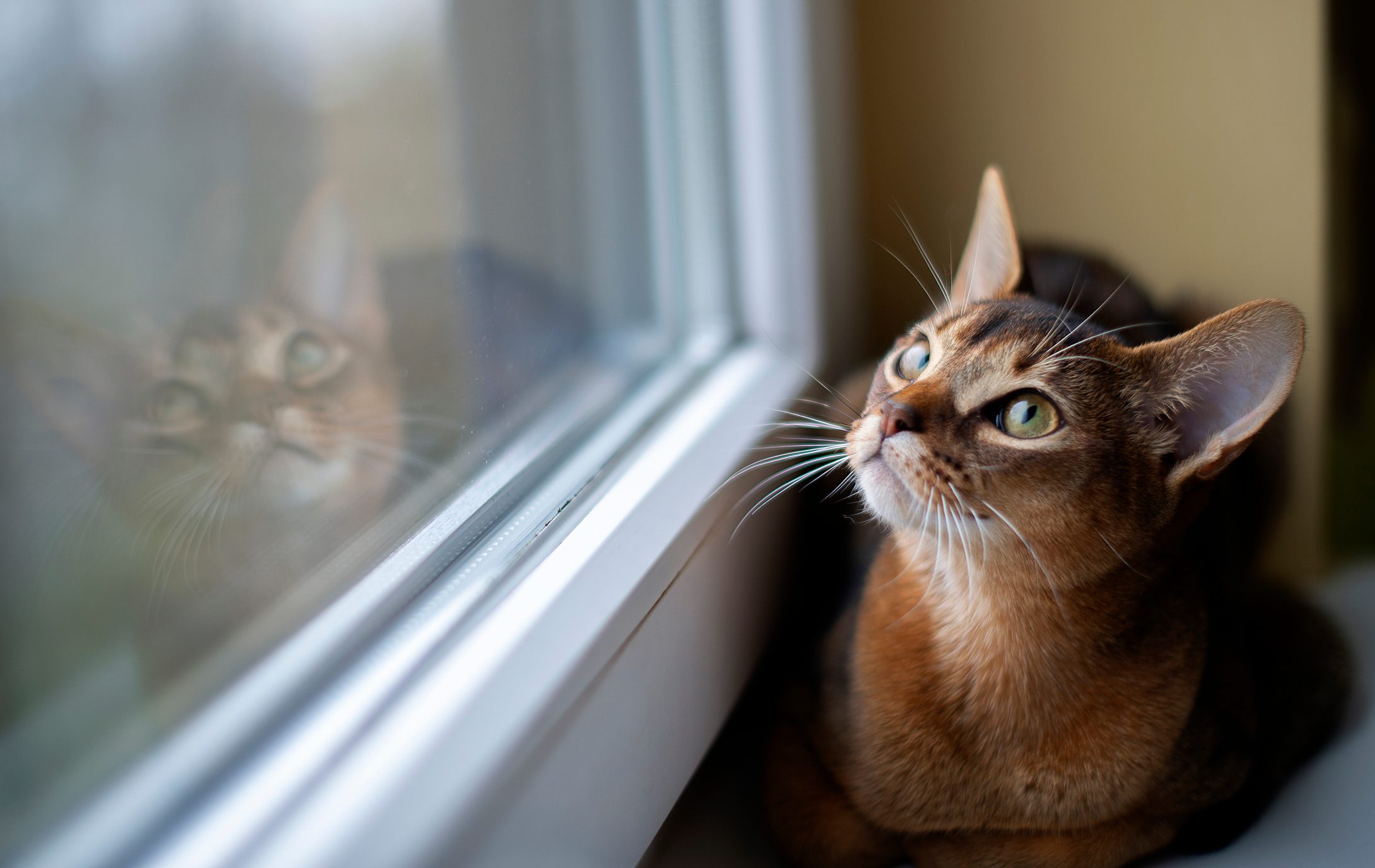Cats can see color—but not the same way humans do. Here’s the truth about how feline vision works and how it differs from ours.

Can Cats See Color?

As much as we like to impose human personalities on our pets, cats are pretty different from us: They walk on four legs, wear fur coats year-round and constantly lick themselves clean. Though we likely have a vague idea that our feline friends aren’t viewing the world exactly the way we are, we may find ourselves wondering just how different we are. For instance, Can cats see color?
We spoke to Michelle Lugones, DVM, professor and director of the Veterinary Technology Program at LaGuardia Community College, to help explain how cat vision really works. Read on to find out whether cats can see color and how their vision compares with that of humans.
Get Reader’s Digest’s Read Up newsletter for more pets, humor, travel, tech and fun facts all week long.
Can cats see color?
First of all, cats certainly don’t see the world in black-and-white. “Cats see in color, but they can’t distinguish between colors the same way humans do,” explains Dr. Lugones.
This has to do with the biology of their eyes, specifically with the cone photopigments. These are pigments that form part of the eye’s photoreceptor cells, which serve the purpose of turning light into signals. As Dr. Lugones notes, “humans have three cone photopigments, [and] cats only have two cone photopigments,” so the way they see the nuances of color differs.

What colors can cats see?
The best way to describe it? “Their vision is similar to how colorblind people see,” Dr. Lugones explains. Primarily, “they can’t tell the difference between reds, greens and yellows.” According to VCA Animal Hospitals, they can see muted colors, with blues, grays and potentially yellows popping most prominently.
How sharp is a cat’s vision compared with a human’s?
Because cats can’t see all of the colors humans can, you might be inclined to think that their eyesight is “worse” than ours—but that’s not the case at all. What they lack in color distinction, they make up for in other areas. One area where cats out-see humans is depth perception, which aids their instinctual ability to hunt and track prey.
That prey instinct ties in with one of their better-known abilities: night vision. “They can see much better in the dark than humans can because their eyes are designed to allow more light to reach their retinas,” says Dr. Lugones. After all, cats are crepuscular (not nocturnal, actually), which means that they’re most active during the dusk and dawn hours.
This behavior stems from their wild ancestors, who hunted during these twilight hours to avoid predators and capitalize on prey activity. They need a sixth as much light as humans do to see.
FAQs
Can cats see ultraviolet (UV) light?
According to Live Science, cats can perceive ultraviolet light. Unlike humans, whose lenses block most UV rays, feline eyes allow UV wavelengths to reach the retina. This ability may help cats detect subtle patterns or markings on surfaces and animals, enhancing their hunting skills.
Can cats see infrared light?
No, cats cannot see infrared light. However, they can detect heat through specialized receptors in their skin, which allows them to sense warm objects or prey even in the dark.
Do cats have a wider field of vision than humans?
Yes, cats have a broader visual field of approximately 200 degrees, compared with the human average of 180 degrees. This wider field enhances their peripheral vision, aiding in detecting movement and potential threats.
About the expert
|
Why trust us
At Reader’s Digest, we’re committed to producing high-quality content by writers with expertise and experience in their field in consultation with relevant, qualified experts. We rely on reputable primary sources, including government and professional organizations and academic institutions as well as our writers’ personal experiences where appropriate. We verify all facts and data, back them with credible sourcing and revisit them over time to ensure they remain accurate and up to date. Read more about our team, our contributors and our editorial policies.
Sources:
- Michelle Lugones, DVM, professor and Program Director of Veterinary Technology at LaGuardia Community College
- VCA Animal Hospitals: “Do Cats See Color?”
- Live Science: “Cats and Dogs May See in Ultraviolet”
- Catster: “Can Cats See Infrared Lights? Feline Vision Facts”























